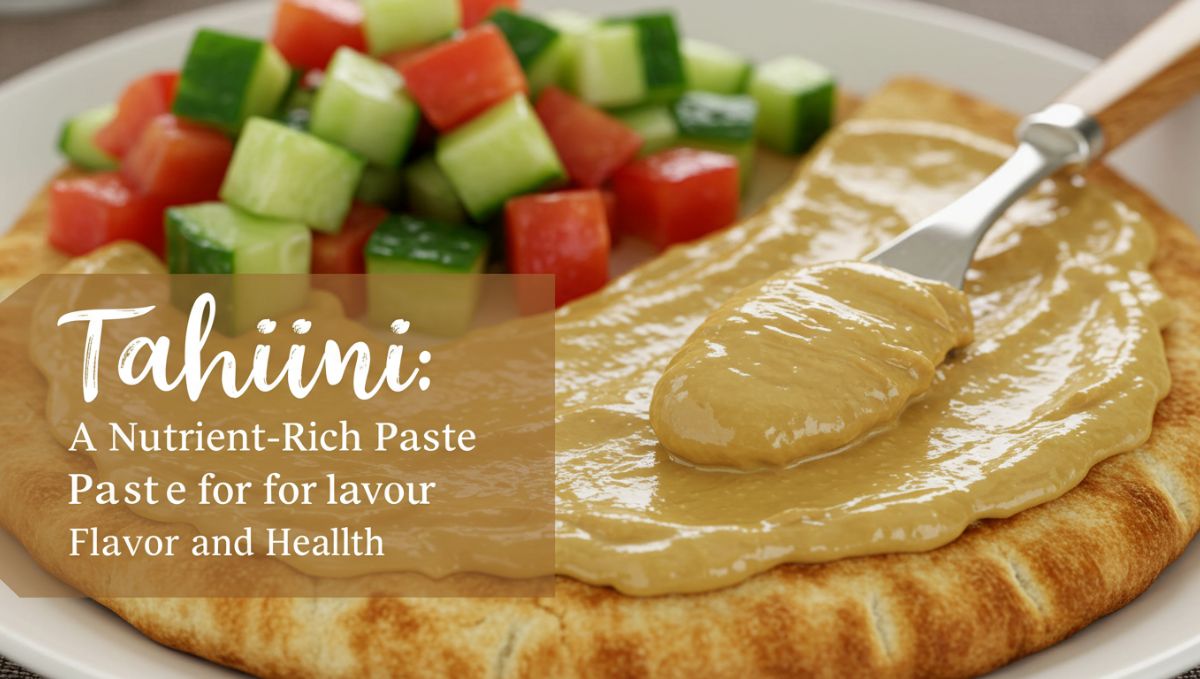Tahhiini, more commonly known as tahini, is a creamy paste made from ground sesame seeds. Popular across the Middle East, Mediterranean, and now the world, it is valued not only for its nutty flavor but also for its impressive nutritional profile. From hummus to salad dressings, from sauces to desserts, tahhiini has become a kitchen staple for chefs and health-conscious eaters alike.
This article explores the history, preparation, health benefits, and culinary uses of tahhiini, while also highlighting its growing role in modern diets.
The Origins of Tahhiini
Tahhiini has ancient roots. Historical records show sesame seeds being cultivated as far back as 4,000 years ago in Mesopotamia and India. Early communities valued sesame oil and ground seeds for both food and medicine.
In Middle Eastern traditions, tah hiini became a vital ingredient in everyday meals. Over time, it spread to the Mediterranean and later to global markets, where it is now widely embraced in both traditional and innovative recipes.
How Tahhiini Is Made
Selection of Sesame Seeds
High-quality tahhiini begins with carefully selected sesame seeds. Hulled seeds (without the outer shell) produce a smooth, mild paste, while unhulled seeds create a stronger, more bitter flavor with extra fiber.
Roasting and Grinding
Seeds are lightly roasted to enhance aroma and flavor. They are then ground into a fine paste, releasing natural oils that give tahhiini its creamy texture.
Variations
-
Light Tahhiini: Made from hulled seeds, mild and smooth.
-
Dark Tahhiini: Made from unhulled seeds, robust and earthy.
-
Raw Tahhiini: Seeds are ground without roasting, giving a lighter taste and higher nutrient retention.
Nutritional Profile of Tahhiini
Tahhiini is packed with essential nutrients:
-
Healthy fats: Rich in unsaturated fatty acids for heart health.
-
Plant-based protein: A valuable source for vegans and vegetarians.
-
Vitamins and minerals: High in calcium, magnesium, iron, phosphorus, and zinc.
-
Antioxidants: Contains sesamol and sesamin, compounds linked to anti-inflammatory effects.
-
Fiber: Supports digestion and gut health.
These properties make tahhiini more than a flavor enhancer—it’s a superfood in its own right.
Health Benefits of Tahhiini
Heart Health
The healthy fats in tahhiini may lower bad cholesterol and promote cardiovascular wellness.
Bone Strength
Tahhiini’s calcium, phosphorus, and magnesium content supports bone density and strength.
Antioxidant Protection
Its compounds fight oxidative stress, which may reduce the risk of chronic diseases.
Digestive Health
The fiber in tahhiini aids digestion and helps maintain a healthy gut microbiome.
Plant-Based Nutrition
For those on vegan or vegetarian diets, tahhiini provides essential protein and minerals often lacking in plant-based eating.
Culinary Uses of Tahhiini
Middle Eastern Classics
Tahhiini is most famously used in hummus and baba ghanoush, where it adds creaminess and depth.
Sauces and Dressings
It makes excellent salad dressings, drizzles for roasted vegetables, or sauces for falafel and kebabs.
Baking and Desserts
Tahhiini adds nutty richness to cookies, brownies, cakes, and halva (a traditional sweet).
Smoothies and Spreads
Blended into smoothies or spread on toast, tah hiini offers a nutrient-dense alternative to nut butters.
Tahhiini in Global Cuisine
While rooted in Middle Eastern cooking, tahhiini has crossed borders:
-
Mediterranean diets feature it in mezze platters.
-
Asian fusion dishes use it in noodle sauces or marinades.
-
Modern Western recipes include tah hiini in energy bars, vegan cheese, and plant-based dips.
Its versatility makes it a universal ingredient.
Sustainability of Sesame and Tah hiini
Tah hiini production aligns well with sustainable food trends:
-
Sesame plants are hardy and drought-resistant, requiring less water than many crops.
-
Smallholder farms around the world cultivate sesame, supporting local economies.
-
Growing demand for plant-based, minimally processed foods positions tah hiini as a sustainable choice.
Buying and Storing Tah hiini
What to Look For
-
Choose tah hiini with minimal ingredients (just sesame seeds, maybe salt).
-
Opt for organic or ethically sourced brands when possible.
-
Decide between hulled or unhulled depending on flavor preference.
Storage Tips
-
Keep unopened jars in a cool, dry place.
-
After opening, store in the refrigerator to extend freshness.
-
Stir well before use, as natural oils may separate.
Common Challenges with Tah hiini
Bitterness
Unhulled tah hiini can taste bitter to some palates. Mixing it with lemon juice or honey balances the flavor.
Texture Issues
If tah hiini thickens in the fridge, simply stir or add warm water or oil to loosen it.
Allergies
Although rare, sesame allergies exist. Always introduce tah hiini with caution for those sensitive to seeds.
Tahhiini in Modern Wellness Trends
Health-conscious consumers and chefs alike celebrate tah hiini for its adaptability. It aligns with:
-
Plant-based diets
-
Gluten-free lifestyles
-
High-protein snacks
-
Whole food movements
In wellness circles, tah hiini is often promoted as both nourishing and indulgent—proof that healthy eating doesn’t have to sacrifice flavor.
Future of Tahhiini in Global Food Culture
With the rise of plant-based eating and interest in sustainable, nutrient-rich foods, tah hiini’s popularity is only expected to grow. New innovations include:
-
Flavored tah hiini spreads (chocolate, chili, herb-infused).
-
Ready-to-use tah hiini dressings.
-
Snack bars and protein bites featuring tah hiini.
As global tastes continue to blend, tah hiini will remain a versatile and essential ingredient.
Conclusion
Tahhiini is more than a simple paste—it is a nutrient powerhouse and a culinary treasure. With ancient roots and modern versatility, it continues to enrich kitchens worldwide. From hummus to desserts, it embodies both tradition and innovation, while offering health benefits that make it a true superfood.
